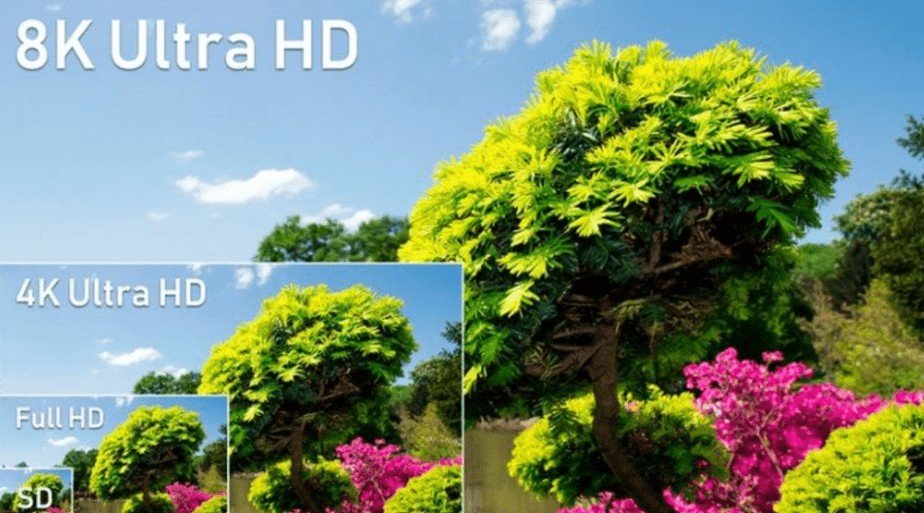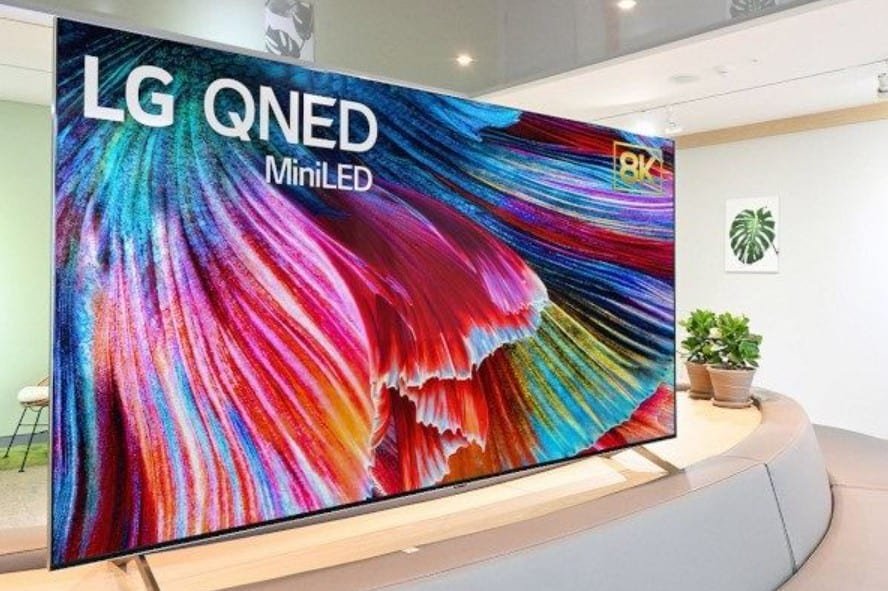A worthy heir to 4K, 8K technology provides 4 times the definition of its predecessor. With images rich in detail, dazzling colors, deep contrasts, and impressive realism, 8K promises to change the future of viewers. Find out all the reasons to switch to 8K TV now.
What is 8K?
8K is the highest screen definition currently available. An 8K television displays ultra high definition 7680 x 4320p. This means that the screen consists of 7680 horizontal pixels and 4320 vertical pixels for a total of 33.17 million pixels.
By way of comparison, it’s 4 times better than a UHD TV, whose definition is 3840 x 2160 p for 8 million pixels. 8K is also 16 times larger than Full HD (1920 x 1080 p) and 32 times larger than HD (1366 x 768 p).
Thanks to its many pixels, 8K offers extreme realism with very detailed images. However, native 8K content is still too rare given the still recent launch of 8K on the market. Many manufacturers, like Samsung, are therefore developing image enhancement technologies, known as upscaling.
This makes it possible to display in 8K definition content that was originally in HD, Full HD, or Ultra HD. This video processing is provided by artificial intelligence which makes it possible to enjoy content in 7680 x 4320p while awaiting the arrival of native 8K content.
What are the differences between 4K and 8K?
First exclusive to high-end televisions when it was launched, 4K has become the new standard for televisions with an ultra high definition of 3840 x 2160p. 8K goes even further; the visual difference is particularly noticeable on a screen of 50 inches or more for 4K and on a screen of 65 inches or more for 8K.
On televisions of the same size, the image rendering is much more realistic with 8K. For comparison, the pixel density is 117 ppi for a 75-inch 8K TV versus 59 ppi for an equivalent-sized 4K TV. 8K offers better perception of brightness and contrast with sharper edges. It brings more immersion, in particular thanks to more dazzling colors than 4K. The rich detail of 8K also helps reduce viewing distances.
What screen size and what distance to take advantage of 8K?
Initially exclusive to high-end televisions, 4K has become the new standard for televisions with ultra high definition of 3840 x 2160p. 8K is intended as its successor and offers a resolution of 7680 x 4320p, i.e. 4 times sharper than 4K UHD. The visual difference is particularly noticeable on a screen of 50 inches or more for 4K and on a screen of 65 inches or more for 8K.
On televisions of the same size, the image rendering is much more realistic with 8K. For comparison, the pixel density is 117 PPI for a 75-inch 8K TV versus 59 PPI for an equivalent-sized 4K TV. 8K offers better perception of brightness and contrast with sharper edges. It brings more immersion, in particular thanks to more dazzling colors than 4K. The richness of detail of 8K helps reduce viewing distances.
How much does it cost to equip yourself with 8K?
In 2021, 8K TVs still have expensive prices given their exclusivity and the size of their screen. However, these high-end products are still much cheaper than 4K TVs in their infancy. A 55-inch (140cm) 8K QLED TV starts at around $1,600. For a 65-inch (164 cm) 8K television, you will have to spend on average $3000.
From a 75-inch (190 cm) 8K screen, you will have to pay around $5,000 to enjoy 8K on a giant screen. Prices can reach higher prices of more than $10,000 on 85-inch (215 cm) 8K TVs from Sony, LG, and Samsung.
As with 4K televisions, 8K TVs should experience democratization of their prices in the years to come.
What content to watch in 8K?
The broadcast of native 8K content on television is still rare given the low demand. Japanese audiovisual group NHK is the first to launch a channel dedicated to the distribution of 8K content. In particular, it broadcast the Tokyo 2020 Olympic Games with this resolution. In France, the France Télévisions group also did some testing in 8K during the Roland-Garros tournament.
The deployment of the 5G mobile network in 2022 could make it possible to democratize the projection of content in 8K, in particular on VoD services such as Netflix and Prime Video. In the meantime, it is possible to find 8K videos on YouTube and Vimeo. Some smartphones like the Samsung Galaxy S21 series are capable of filming in 8K and projecting their content on a television of the same definition. On the video game console side, the PlayStation 5 and Xbox Series X can offer 8K resolution at 60 frames per second using an HDMI 2.1 cable.


